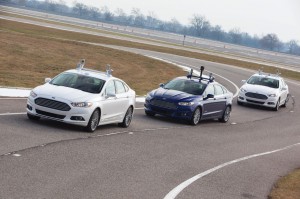The move toward autonomous vehicles becoming a reality took another step forward when Michigan Governor Rick Snyder signed legislation today allowing the vehicles to be tested on the state’s roadways.
Michigan joins Nevada, California and Florida as the only states allowing on-road testing.
Snyder’s blessing wasn’t a surprise given the number of automakers and suppliers based in Michigan involved in these projects as well as the fact that he’s been an advocate of this type of work for some time.
A number of companies – automakers, suppliers and technology firms – have been touting their efforts to have these vehicles in dealer showrooms by as early as 2020, but one issue that hasn’t been settled is what these manufacturers will be bringing to the market.
There are basically two camps: fully autonomous and semi-autonomous. Several companies, such as Google, Nissan, General Motors, Ford and Continental, an automotive supplier, are pushing fully autonomous vehicles. Drivers would simply be able to sit down and do nothing while their car or truck did all the work.
Nissan plans to have commercially viable Autonomous Drive vehicles by 2020. Not wanting to be left out, General Motors and automotive supplier Continental also made 2020 their deadline. Ford plans to follow suit in 2025.
Google had plans to be the lead dog in the fully autonomous race when the company’s co-founder, Sergey Brin, predicted the arrival of self-driving cars for the general public by 2017. However, Volvo went beyond predictions when it said earlier this month it would put 100 autonomous vehicles on the roads in Sweden for use by everyday people as part of its “Drive Me” project.
(Rinspeed goes autonomous with XchangE. For more, Click Here.)
Toyota and Volkswagen seem to be looking toward a semi-autonomous vehicle that basically keeps the driver in control behind the wheel, but provides technologies that make the vehicle and driver safer. Toyota recently introduced some of that technology. It’s Automated Highway Driving Assist (AHDA), which consists of two new features: Cooperative-Adaptive Cruise Control and Lane Trace Control.
In the coming year, more of these vehicles will be seen on public roads as many of the companies are simply beyond the track-testing stage of development.
(Click Here to read about the increasing interest in driverless vehicles.)
Michigan will require these vehicles to have a special “M” license plate while Nevada, the first state to formally license the technology and issue a distinctive dark red license plate with a unique infinity emblem.
Michigan-based companies and universities are playing an integral role in the development of intelligent, connected vehicle programs aimed at driverless cars. Approving the testing was key to the future of research and development of automotive technology in the state.
The University of Michigan says that by 2021, Ann Arbor, Mich. could become the first U.S. city with a shared fleet of networked, driverless vehicles. The Mobility Transformation Center, an initiative that also involving the university, government and industry representatives, is working to make that a reality. Ann Arbor has been home to a 15-month study of 3,000 vehicles that are linked to one another in a test of technology to see if connected cars can help each other avoid crashes.

